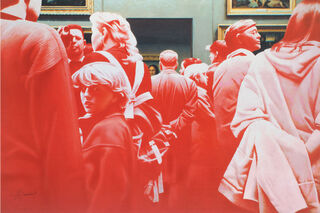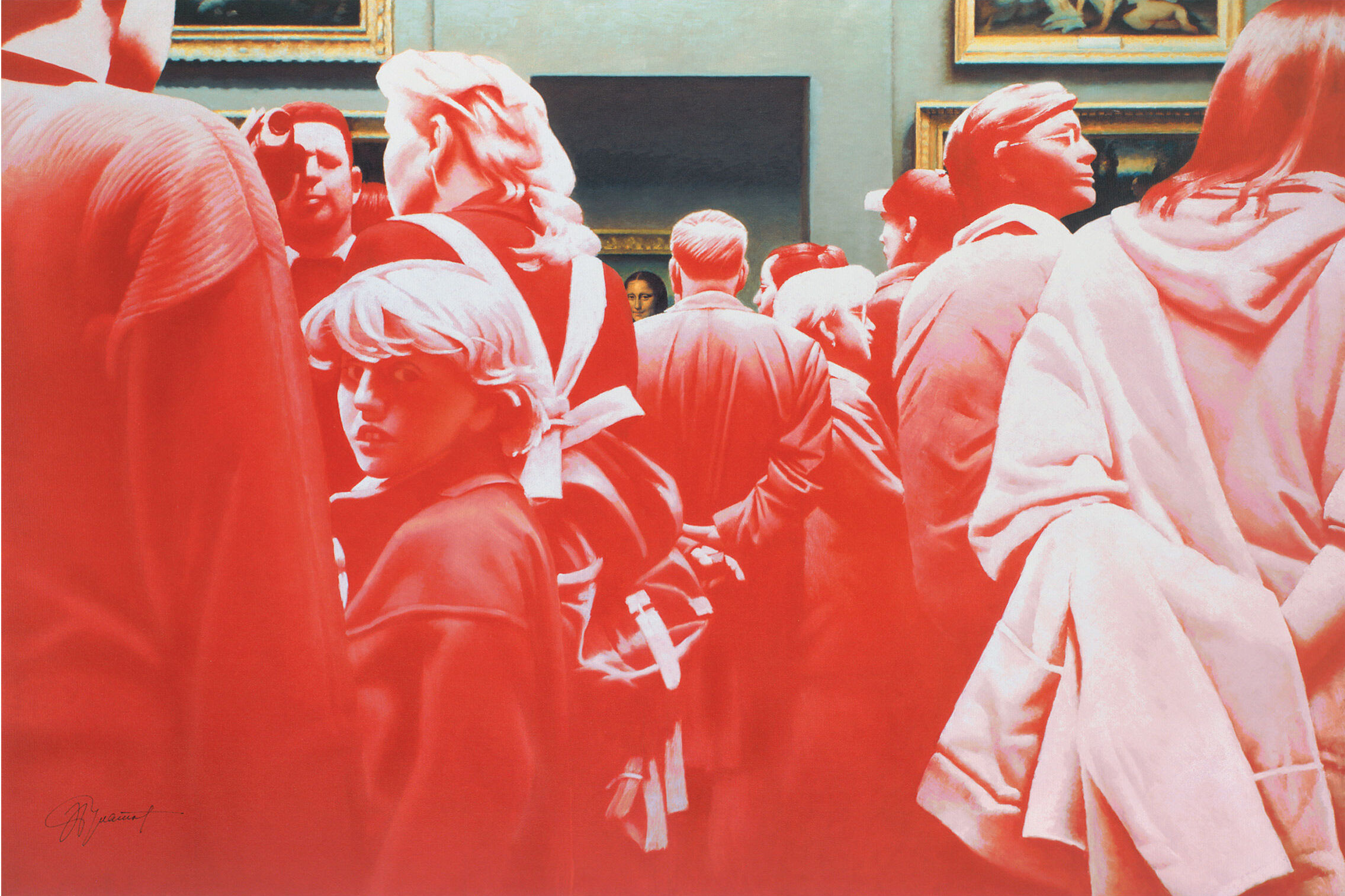Picture "La Gioconda" (2006), on stretcher frame


Picture "La Gioconda" (2006), on stretcher frame
Quick info
limited, 199 copies | numbered | signed | reproduction, Giclée print on canvas | on stretcher frame | size 80 x 120 cm (h/w)
Detailed description
Picture "La Gioconda" (2006), on stretcher frame
In his work "Louvre - La Gioconda", Bulatov paints a group of visitors in the Louvre in signal red and depicts - unnoticed at first glance - the different characters of the visitors. The boy in the foreground notices the artist and looks at him. In the back of the picture, there is the object of interest, small in perspective and half hidden: Leonardo da Vinci's "Mona Lisa", probably the most famous painting in art history.
Giclée on artist's canvas 2006 after the painting of 1997/98. 199 copies. Signed by hand on the front, numbered on the back. Stretched on a stretcher frame. Size 80 x 120 cm (h/w).
About Erik Bulatov
Art means freedom.
The Russian painter Erik Bulatov found himself in complete artistic isolation in the Soviet Union. He was separated from every Western development in contemporary art due to the Iron Curtain. Even at home, interactions with critics and the public was impossible, as Bulatov refused to be co-opted into the state-prescribed art canon and thus did not officially exist. In this intellectual vacuum, Bulatov, who earned his living as a children's book illustrator, developed his imagery, critically processing Socialist Realism as well as Russian Constructivism.
In order to create an opportunity for oppositional artists to present their work, Bulatov, together with colleagues such as Ilya Kabakov and Oleg Vassiliev, co-founded the "Sretensky Boulevard Group" in the 1960s, from which the artist group "Moscow Conceptualists" later emerged. But again, the governmental regulations of the Soviet art system interfered: In 1965, one of the first exhibitions he took part in Moscow was closed and banned after only one hour. Because of this experience, Bulatov emphasised the liberating power of art: "It has always been my conviction that the sphere of society has limits and that the path to freedom only leads through the sphere of art, which lies beyond these limits. Certainly, I know that this is not the universal path - but for me, it has always been the only possible one."
Erik Bulatov was born in 1933 in Sverdlovsk/Ural. He studied at the Moscow Art School and the Surikov Art Institute in Moscow, where he graduated in 1958. Erik Bulatov is one of the most important contemporary artists in Russia today. In 2008, he became an honorary member of the Russian Academy of Art. He lives and works in Paris. He has had solo exhibitions, among others, at the Musée des Beaux-Arts de la Ville de Paris, the Centre Pompidou, the Tretyakov Gallery in Moscow, and the Kestnergesellschaft in Hanover.
Depiction of typical scenes from daily life in painting, whereby a distinction can be made between peasant, bourgeois and courtly genres.
The genre reached its peak and immense popularity in Dutch paintings of the 17th century. In the 18th century, especially in France, the courtly-galant painting became prominent while in Germany the bourgeois character was emphasised.
Giclée = derived from the French verb gicler "to squirt, spurt".
The giclée method is a digital printing process. It is a high-resolution, large-format printout on an inkjet printer with special different-coloured dye- or pigment-based inks (usually six to twelve). The colours are fade-proof, i.e. resistant to harmful UV light. They have a high richness of nuance, contrast and saturation.
The giclée process is suitable for art canvases, handmade and watercolour paper as well as for silk.


